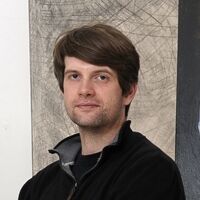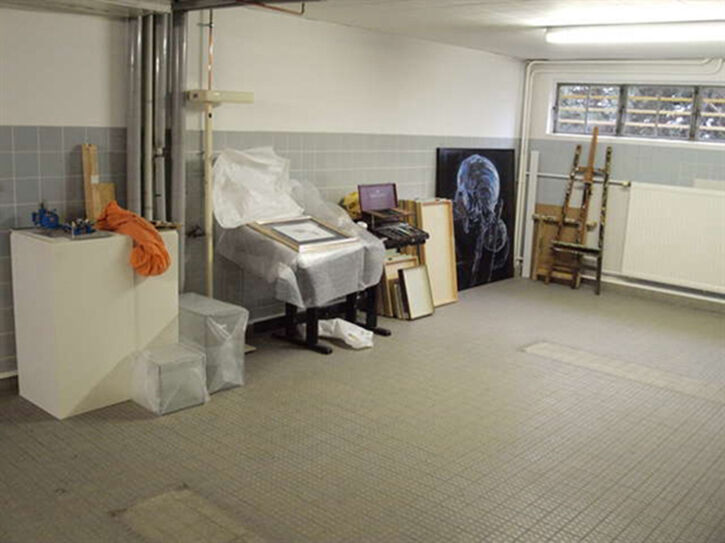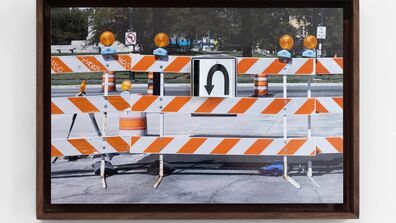
A City That Works
by Laurel Foglia (MFA 2013)
If all those stories you keep hearing about a city full of artists have piqued your interest, Jason Merrill Benedict (BFA 1999) may be your perfect guide to Berlin. Right now, Benedict is in the process of interviewing artists for a shared studio space he and his collaborators are opening in what was once a laundromat. This group studio is the newest addition to the WerkStadt Kulturverein Berlin, a nonprofit arts union that Benedict cofounded in 2008. WerkStadt, which means “work city,” is a play on the German word werkstatt, which means “workshop.”
With artist studios; a café and bar for holding meetings, classes, and concerts; a noncommercial gallery space; a photo lab; a wood shop; and a writing space, the WerkStadt provides a platform for a range of interdisciplinary projects.

The arc of Benedict’s trajectory from growing up in Seattle to working and raising his children in a vibrant arts community in Berlin took him first through Chicago and Madrid. As a draftsman and a painter beginning to experiment with metalwork and robotics, Benedict was drawn to the interdisciplinary possibilities and the robust facilities of SAIC, including its partner museum. “The Art Institute opened up a whole world to me,” says Benedict. “The first time I walked in, I spent hours and hours trying to see every single thing.” The museum sparked an interest in art history that carries through to Benedict’s life in Berlin where, among many pursuits, he serves as a museum educator in several of the Berlin State Museums.
Benedict’s first experience living abroad occurred during his time at SAIC. With guidance from professors, he designed his own study trip to Spain. “Madrid was a great place to be a student of art,” says Benedict. “What I was doing [and] what I was interested in was all taken seriously in a different way than it was in the US.”
Soon after Benedict completed his degree at SAIC, he returned to Europe—focusing on a studio practice in Madrid for five years before moving to Berlin. The German capital offered affordable studio space and an energetic art scene that Benedict describes as less hierarchical than it is lateral. “I could go to some pop-up, punk rock exhibition space and put up work. Then someone else would put up work. Everyone would open a beer, and it would be an art opening. Then I’d turn around and realize I was showing next to the guy who just won the Guggenheim Fellowship,” he says.
The DIY scene of pop-up shows in alternative spaces impressed Benedict as an eclectic convergence of interests, skills, and degrees of experience. “There was the scientific sculptor, the political painter, the aspiring actor, the filmmaker who then runs the café. It was similar to what drew me to SAIC,” says Benedict. “I was also interested in this magical thing where artists had so much space and were getting funding through the European Union and through national structures.”

Berlin’s complicated 20th-century history accounts for its plentiful, cheap space and lively cultural sphere. The boom that could have followed the fall of the Berlin Wall and the reunification of Germany in 1990 never materialized. Economic stagnation and over-zealous construction projects kept rents low. Streams of disaffected youths (many of them artists) flowed into Berlin. “There was a mix of people and room to experiment,” says Benedict. “It was a churning art scene that launched Berlin’s new reputation. The city’s current motto is ‘Be creative, be Berlin.’”
Shortly after Benedict arrived in Berlin, he formed a group studio space with a handful of people he had just met. They pooled their resources to put on a show of their work, and 120 people showed up on opening night. “I thought, ‘Wow, this is truly an engaged artistic public,’” he says.
To harness this exuberance, Benedict and a small cohort of artists and arts administrators rented an unused pharmacy that became the headquarters of the WerkStadt.
What started with five people now has 40 active union members and three addresses and is the first arts and culture institution in the district of Neukölln to receive funding directly from the EU for its arts education projects. The WerkStadt is also able to create freelance jobs for members of the organization. “Paying people a proper wage for doing work in the arts is important to us,” says Benedict. “And we’re committed to being a platform for experimentation. When people here see that, they enthusiastically join in. We started doing open calls for exhibitions, and hundreds of applications arrived from all over the world to show in our little abandoned pharmacy.”
When the Universität der Künste Berlin launched a cross-disciplinary degree program in curatorial practices, Benedict enrolled in the first cohort, and the scope of his public efforts widened. Benedict’s most ambitious project to date, co-financed by the EU, took shape last year in Riga, Latvia. He organized a diverse group of artists whose work explores both a longing for the open possibilities of the future and an uneasiness with the liminal space just before the future comes into view. Metamorphilia-Metamorphobia was a contemporary art component of a larger international art education framework in which the WerkStadt also facilitated a series of workshops for schoolchildren in Berlin—museum tours, music, theater, dance performances, and fine art classes—and presented the children’s work in a second Riga exhibition. This year, Benedict has plans to produce a similar project in San Sebastian, Spain, this time focusing on artworks that address issues of austerity politics around Europe.
Benedict—now a father of two and married to a co-founder of the WerkStadt—has put down roots in Berlin. With the infrastructure and funding to make and show work and engaging people around to work with, the life he is cultivating follows a model that many young artists are eager to emulate. “The WerkStadt,” says Benedict, “is about building our own opportunities.”
The WerkStadt welcomes a steady stream of interns, volunteers, and exhibition proposals. For more information, contact art@werkstadt-berlin.com.
